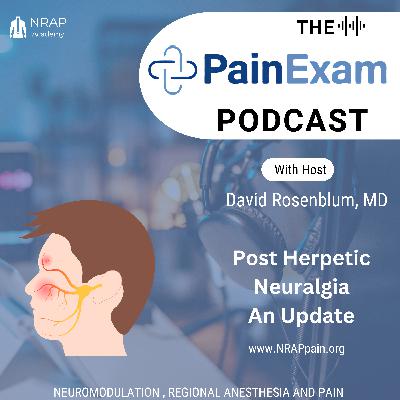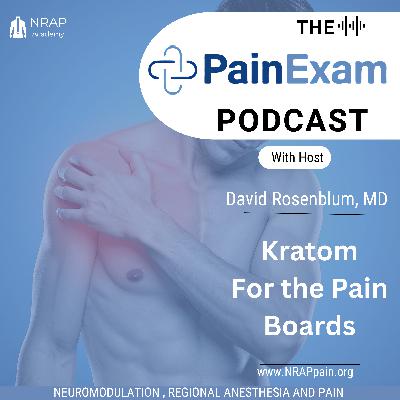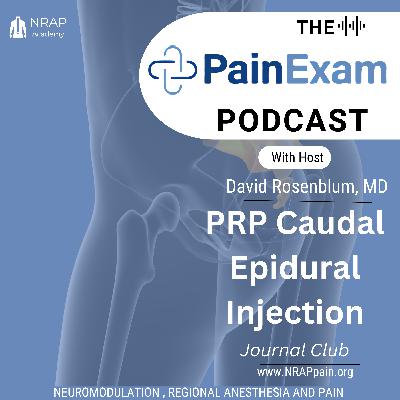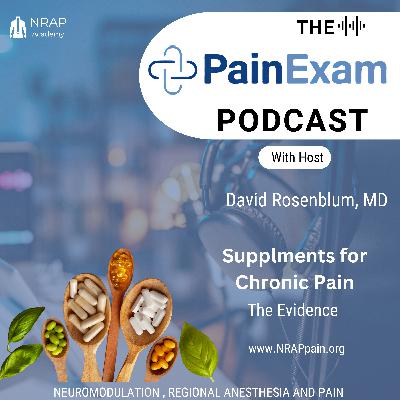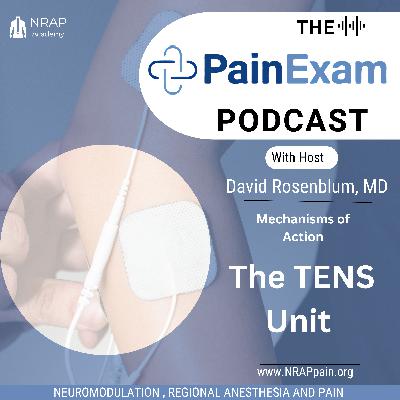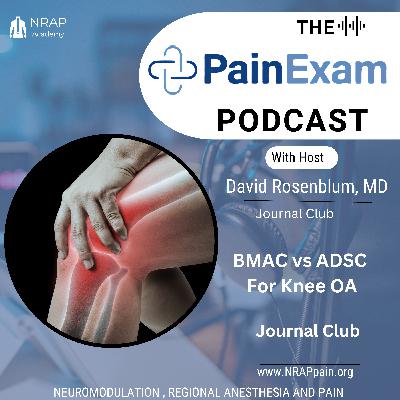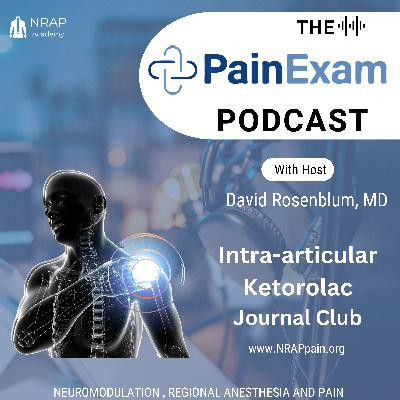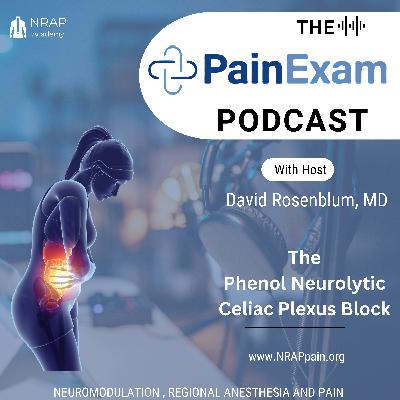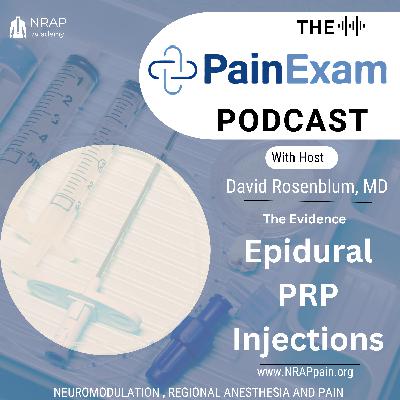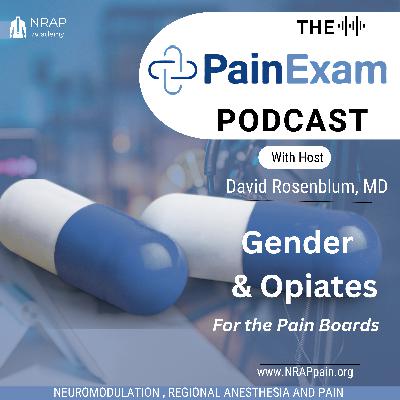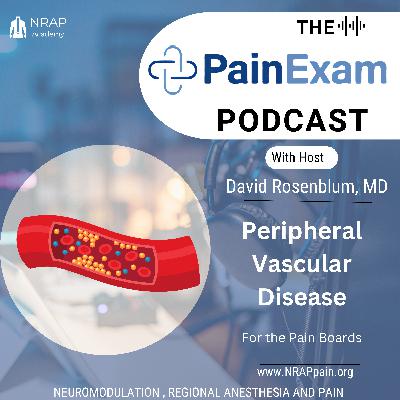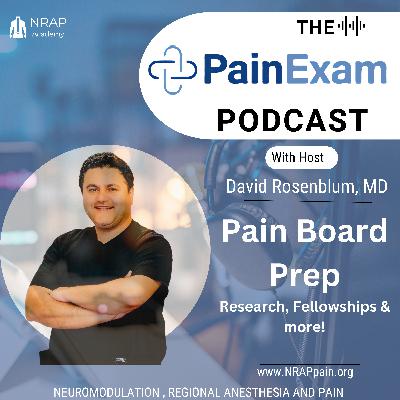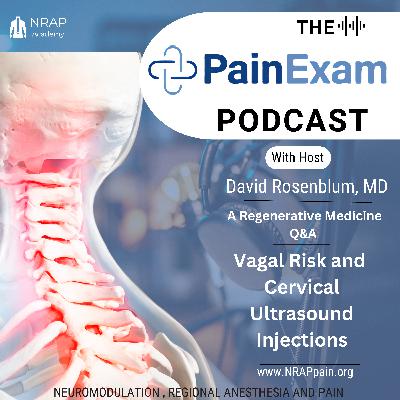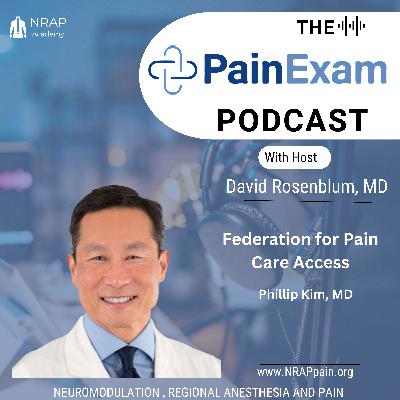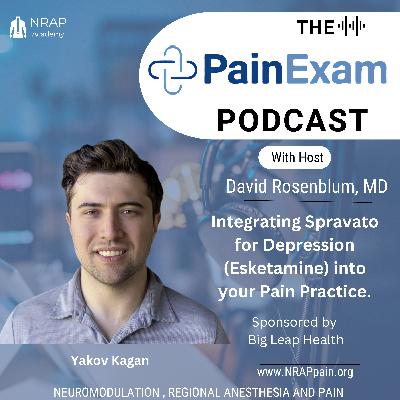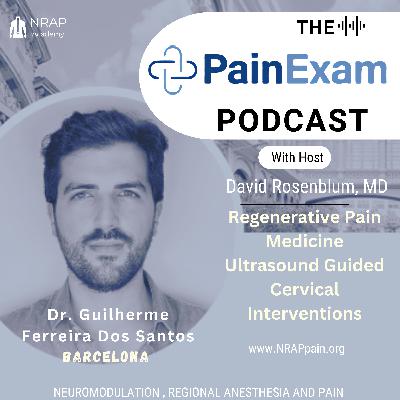Post Herpetic Neuralgias: Epidurals, Paravertebral Blocks and more!
Description
Summary
In this episode of the Pain Exam Podcast, Dr. David Rosenblum provides a comprehensive review of herpes zoster and postherpetic neuralgia (PHN), focusing on pathophysiology, diagnosis, and treatment options. Dr. Rosenblum explains that postherpetic neuralgia affects approximately 25% of patients with acute herpes zoster, causing debilitating unilateral chronic pain in one or more dermatomes. He discusses the three phases of herpes zoster: acute (up to 30 days), subacute (up to 3 months), and postherpetic neuralgia (pain continuing beyond 3 months). Dr. Rosenblum identifies risk factors for developing PHN, including older age, female sex, immunosuppression, prodromal pain, severe rash, and greater acute pain severity. He details the pathophysiology involving peripheral and central sensitization, and explains different phenotypes of PHN that can guide treatment approaches. For treatment, Dr. Rosenblum reviews various options including antiviral medications (which should be started within 72 hours of onset), corticosteroids, opioids, antidepressants (particularly tricyclics and SNRIs), antiepileptics (gabapentin and pregabalin), topical agents (lidocaine and capsaicin), and interventional procedures such as epidural injections and pulsed radiofrequency. He emphasizes that prevention through vaccination with Shingrix is highly effective, with 97% effectiveness in preventing herpes zoster in patients 50-69 years old and 89% effectiveness in those over 70. Dr. Rosenblum mentions that he's currently treating a patient with trigeminal postherpetic neuralgia and is considering a topical sphenopalatine ganglion block as a minimally invasive intervention before attempting more invasive procedures.
Chapters
Introduction to the Pain Exam Podcast and Topic Overview
Dr. David Rosenblum introduces the Pain Exam Podcast, mentioning that it covers painful disorders, alternative treatments, and practice management. He explains that this episode focuses on herpes zoster and postherpetic neuralgia as board preparation for fellows starting their programs, with ABA boards coming up in September. Dr. Rosenblum notes that he's not only preparing listeners for boards but also seeking the latest information to help treat his own patients with this notoriously difficult disease.
Upcoming Conferences and Educational Opportunities
Dr. Rosenblum announces several upcoming conferences including Aspen in July, Pain Week in September, and events with NYSIP and the Latin American Pain Society. He mentions he'll be teaching ultrasound and regenerative medicine at these events. Dr. Rosenblum invites listeners to sign up at nrappain.org to access a community discussing regenerative medicine, ultrasound-guided pain medicine, regional anesthesia, and board preparation. He also offers ultrasound training in New York and elsewhere, with upcoming sessions in Manhattan on July 12th and October 4th, plus private shadowing opportunities.
Overview of Postherpetic Neuralgia
Dr. Rosenblum defines postherpetic neuralgia as typically a unilateral chronic pain in one or more dermatomes after acute herpes zoster infection. He states that the incidence of acute herpes zoster ranges between 3-5 patients per thousand person-years, and one in four patients with acute herpes zoster-related pain will transition into postherpetic neuralgia. Dr. Rosenblum emphasizes that while this condition won't kill patients, it can be extremely debilitating and significantly reduce quality of life.
Treatment Options Overview
Dr. Rosenblum reviews treatment options according to the WHO pain ladder, including tricyclics like nortriptyline and antiepileptic drugs such as gabapentin. He explains that if pain is not significantly reduced, interventional treatments like epidural injections with local anesthetics and corticosteroids or pulsed radiofrequency of the dorsal root ganglion are options. For postherpetic neuralgia specifically, Dr. Rosenblum notes that preferred treatments include transdermal capsaicin, lidocaine, or oral drugs such as antidepressants or antiepileptics.
Phases of Herpes Zoster and Definitions
Dr. Rosenblum outlines the three phases during herpes zoster reactivation: acute herpes zoster-related pain (lasting maximum 30 days), subacute herpes zoster-related pain (pain after healing of vesicles but disappearing within 3 months), and postherpetic neuralgia (typically defined as pain continuing after 3 months). He mentions that acute herpes zoster pain often begins with prodromal pain starting a few days before the appearance of the rash.
Incidence and Risk Factors
Dr. Rosenblum states that the incidence of herpes zoster ranges between 3-5 patients per 1,000 person-years, with approximately 5-30% of cases leading to postherpetic neuralgia. He identifies risk factors including older age, female sex, immunosuppression, prodromal pain, severe rash, and greater acute pain severity. Dr. Rosenblum describes the clinical manifestations as a mosaic of somatosensory symptoms including burning, deep aching pain, tingling, itching, stabbing, often associated with tactile and cold allodynia.
Impact on Quality of Life
Dr. Rosenblum emphasizes that postherpetic neuralgia can be debilitating, impacting both physical and emotional functioning and causing decreased quality of life. He notes that it leads to fatigue, insomnia, depression, anorexia, anxiety, and emotional distress. Dr. Rosenblum stresses the importance of exploring methods for prevention of postherpetic neuralgia and optimizing pain treatment for both subacute herpes zoster-related pain and postherpetic neuralgia.
Literature Review and Pathophysiology
Dr. Rosenblum mentions that he's discussing a literature review from 2024 that updates previous practical guidelines published in 2011. He explains the pathophysiology of postherpetic neuralgia, which involves sensitization of peripheral and sensory nerves from damage. Dr. Rosenblum describes how inflammatory mediators reduce the stimulus threshold of nociceptors and increase responsiveness, resulting in pathological spontaneous discharges, lower thresholds for thermal and mechanical stimuli, and hyperalgesia.
Central Sensitization and Nerve Damage
Dr. Rosenblum explains that central sensitization results from peripheral nociceptor hyperactivity leading to plastic changes in the central nervous system, involving amplification of pain signals and reduced inhibition. He describes how nerve damage in postherpetic neuralgia patients results from neuronal death due to severe inflammatory stimuli or secondary to neuronal swelling. Dr. Rosenblum notes that motor defects occur in 0.05% of patients with herpes zoster, observed as abdominal pseudohernias or motor weakness of limbs limited to the affected myotome.
Different Phenotypes and Classification
Dr. Rosenblum discusses different phenotypes of postherpetic neuralgia and how phenotyping can determine treatment. He explains that there are several ways to classify the phenotypes, with one categorizing patients into three subtypes: sensory loss (most common), thermal gain, and thermal loss with mechanical gain. Dr. Rosenblum describes the mechanistic categorization, including the irritable nociceptive phenotype characterized by preserved sensation, profound dynamic mechanical allodynia, reduced pressure pain threshold, and relief with local anesthetic infiltration.
Deafferentation Phenotype
Dr. Rosenblum explains that a deafferentation phenotype may arise from destruction of neurons by the virus in the dorsal root ganglion. This phenotype is characterized by sensory loss, including thermal and vibratory sensation without prominent thermal allodynia. He notes that mechanical allodynia can occur secondary to A-beta fibers activating spinothalamic pathways (known as phenotypic switches), along with pressure hyperalgesia and temporal summation suggesting central sensitization. Dr. Rosenblum mentions that in one study, this phenotype was present in 10.8% of individuals, and for those with deafferentation pain, gabapentinoids, antidepressants, and neuromodulatory therapies like repetitive transcranial magnetic stimulation may be beneficial.
Diagnosis and Physical Examination
Dr. Rosenblum discusses the diagnosis of herpes zoster and postherpetic neuralgia, emphasizing the importance of physical examination. He explains that diagnosis is based on the rash, redness, papules, and vesicles in the painful dermatomes, with healing vesicles showing crust formation. Dr. Rosenblum notes that the rash is generally unilateral and does not cross the midline of the body. In postherpetic neuralgia patients, he mentions that scarring, hyper or hypopigmentation is often visible, with allodynia present in 45-75% of affected patients.
Sensory Testing and Assessment
Dr. Rosenblum explains that in patients with postherpetic neuralgia, a mosaic of somatosensory alterations can occur, manifesting as hyperalgesia, allodynia, and sensory loss. These can be quantified by quantitative sensory testing, which assesses somatosensory functions, dermal detection thresholds for perception of cold, warmth, and paradoxical heat sensations. He notes that testing can provide clues regarding underlying mechanisms of pain, impaired conditioned pain modulation, temporal summation suggesting central sensitization, and information about the type of nerve damage and surviving afferent neurons.
Prevention Through Vaccination
Dr. Rosenblum discusses prevention of

